What is a Roof Over a Patio?
A roof over a patio, also known as a patio cover, is a structure designed to provide shelter and protection to an outdoor living space. It is an excellent addition to any home, providing a comfortable and stylish area for outdoor entertainment, relaxation, and recreation.
A patio roof can come in various styles, including flat roof, gable roof, hip roof, and solid roof. The type of roof you choose will largely depend on your preference, outdoor space, and budget. Flat roofs provide a modern and sleek look, while gable roofs offer a classic and traditional appearance. Hip roofs, on the other hand, combine the benefits of both flat and gable roofs. Solid roofs provide the most protection from the elements and are perfect for areas that require complete shade.
Patio roofs can be made from a variety of materials, including wood, composite, and metal. Natural wood provides a warm and rustic feel to the outdoor space, while composite materials offer a durable and low-maintenance option. Metal roofs are the most durable and long-lasting and can withstand harsh weather conditions such as wind and rain.
A patio roof is an excellent solution for a range of outdoor projects, such as creating an entertainment space, protecting patio furniture from the elements, or providing a covered area for children to play. Along with the roof, it is equally important to have a good type of flooring for your patio. It is also a perfect option for roof decking, allowing you to expand your outdoor space while providing protection from the sun and rain.
When considering building a roof over your patio, it is essential to research building codes in your area to ensure compliance with any regulations. Additionally, consider the average costs associated with patio covers, including labor costs, materials, and any additional features such as retractable awnings or console brackets.
In conclusion, a roof over a patio is an excellent addition to any outdoor living space, providing shelter and protection while enhancing the overall aesthetic of your home. With a wide range of materials, styles, and budget options, there is a perfect patio cover for every home.
Benefits of Installing a Roof Over a Patio
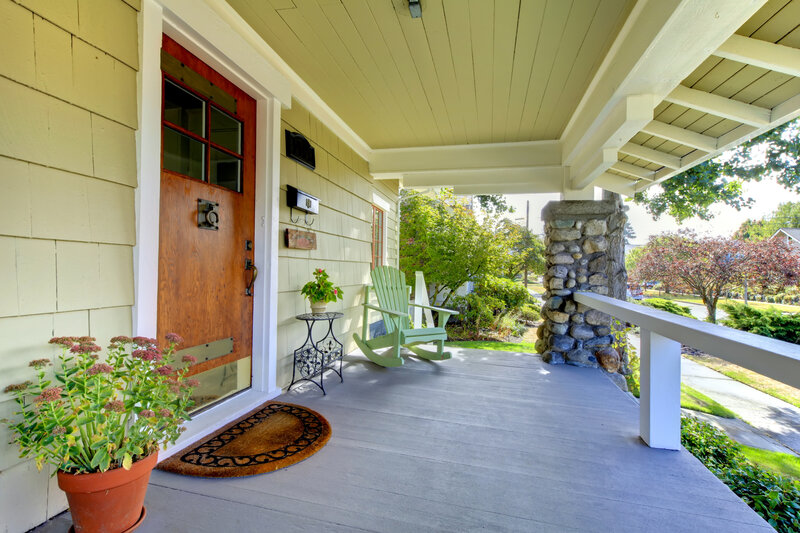
Installing a roof over your patio is an excellent way to enhance your outdoor living space, and it comes with numerous benefits for homeowners. A patio roof provides protection from extreme weather conditions such as rain, wind, and snow, allowing you to enjoy your outdoor living space all year round. If you’re still on the fence about installing a roof over your patio, here are some benefits to consider:
1. Increased Property Value
Adding a patio roof can add value to your home, making it a worthwhile investment. A covered patio provides an additional outdoor living area, which is highly sought after by potential buyers, who are always looking for unique features that set a home apart from others.
2. Entertainment Space
A patio roof creates an excellent outdoor entertainment space for hosting a gathering or party. With a roof overhead, you can entertain guests without worrying about weather fluctuations, enabling you to enjoy your backyard for longer periods. You can also add some outdoor lighting such as fairy lights to create the perfect ambiance.
3. Protection From UV Rays
A patio roof also offers protection from harmful UV rays, which can be dangerous to your skin. Installing a solid roof provides the most shade, allowing you to enjoy your outdoor living space without worrying about sunburns.
4. Energy Savings
Patio roofs provide a natural source of insulation, reducing the amount of sunlight that enters your home in the summer months, and they also retain heat during the winter. This can help to lower your energy bills and reduce your carbon footprint.
5. Low Maintenance
Patio roofs require minimal maintenance once installed. You can choose from a variety of materials such as wood, composite, and metal, based on the level of maintenance you’re willing to carry out. Additionally, patio roofs are easy to clean and can be hosed down or wiped clean using a damp cloth.
6. Versatility
A covered patio can be used for different purposes such as an outdoor dining area, a relaxing retreat, or a play area for children. The possibilities are endless, and your patio roof can be customized to fit your needs.
In conclusion, a patio roof provides various benefits, including increased property value, energy savings, UV protection, and low maintenance. It also creates an outdoor entertainment space, offers versatility, and protects your patio furniture. If you’re considering installing a roof over your patio, consult with a roofing service provider and get a quote. You’ll be enjoying your outdoor living space year-round in no time!
Types of Roofs for Patios
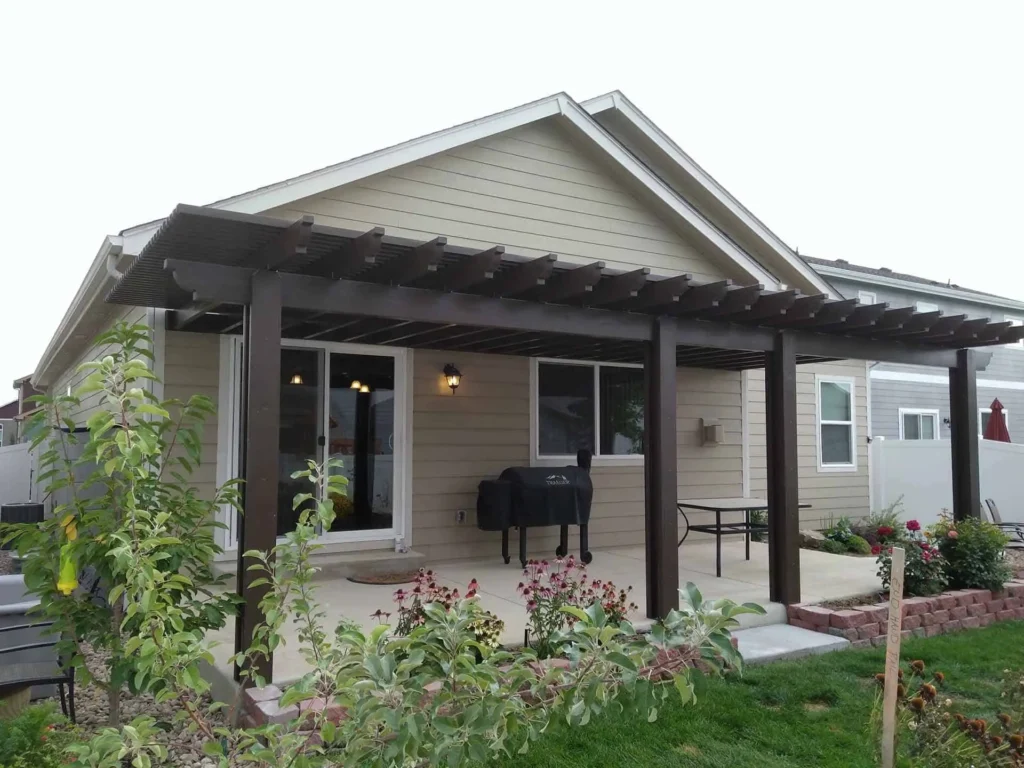
There are several types of roofs for patios that can enhance your outdoor living space while adding value to your home. Let’s take a look at some of the most popular options.
1. Gable Roofs
Gable roofs are a popular choice for patios due to their classic triangular shape and versatility. They are made up of two sloping sides that meet at a ridge, forming the familiar triangular shape. A gable roof provides ample space for insulation, making it an energy-efficient option for your patio.
2. Flat Roofs
Flat roofs are a more modern option that offer a sleek and contemporary look to your outdoor living space. They are easy to build and typically require less structural support than other roof types, which can lower your overall project cost. However, it’s important to note that flat roofs do require drainage to prevent water buildup, which can be achieved with a slight slope or a built-in drainage system.
3. Hip Roofs
Hip roofs have a gentle slope on all four sides, making them a great option for patios that need more protection from the elements. They offer better protection from wind and rain than gable roofs, and their design allows them to blend in with the overall architecture of your home. However, hip roofs can be more expensive to build due to their complex design.
4. Retractable Awnings
Retractable awnings are a versatile and cost-effective option for a patio roof. They are simple to install and can be easily adjusted to provide shade as needed. Some models feature motorized systems that can be controlled with a remote, allowing you to customize the amount of shade with ease.
5. Solid Roofs
Solid roofs are generally the most durable and weather-resistant option for a patio roof. They are made with solid materials such as metal or wood, which offer excellent protection from wind, rain, and snow. Solid roofs are also the best option for adding insulation to your patio, which can lead to energy savings and a more comfortable outdoor living space.
6. Pergolas
Pergolas are a popular option for those looking for a more natural or rustic look. They consist of vertical posts with open rafters, providing partial shade while still allowing sunlight to filter through. Pergolas can be made from a variety of materials such as wood, metal, and vinyl, and can be customized with optional accessories such as retractable canopies or string lights.
In conclusion, the type of roof you choose for your patio will depend on your budget, design preferences, and level of protection required. Whether you opt for a gable roof, flat roof, hip roof, retractable awning, solid roof, or pergola, a patio roof is a great investment that can enhance your outdoor living space while adding value to your home.
Gable Roofs
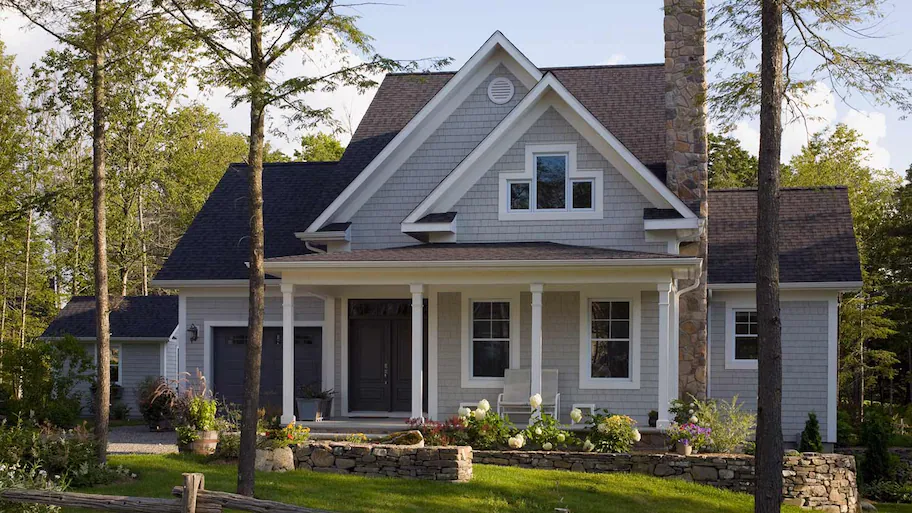
If you’re looking for a classic and versatile option for your patio cover, consider a gable roof. Gable roofs are a popular choice due to their triangular shape, which provides ample space for insulation and ventilation.
The two sloping sides of a gable roof meet at a ridge at the top, forming the iconic triangular shape that we all recognize. Because of this design, gable roofs are known for their ability to shed water and snow easily, making them a great choice for areas with heavy precipitation.
One of the benefits of a gable roof is that it can be customized to fit any outdoor living space. The size and pitch of the roof can be adjusted depending on the size and shape of your patio, and the design can be tailored to match the aesthetic of your home.
Gable roofs also provide plenty of opportunity for design elements such as dormers or skylights. These features can add additional natural light to your patio and enhance the overall ambiance of your outdoor living space.
In terms of roofing materials, gable roofs can be made from a variety of materials including wood, metal, or shingles. The choice of material will depend on your personal preference, the weather in your area, and the overall cost of the project.
Another benefit of a gable roof is that they are energy efficient due to the ample space for insulation. This can lead to lower heating and cooling costs in your home, making it a smart investment for the long term.
Overall, a gable roof is a great choice for anyone looking for a classic and versatile option for their patio cover. With its iconic triangular shape and customizable design, a gable roof can enhance the overall look and value of your home while providing ample protection and comfort for your outdoor living space.
Flat Roofs
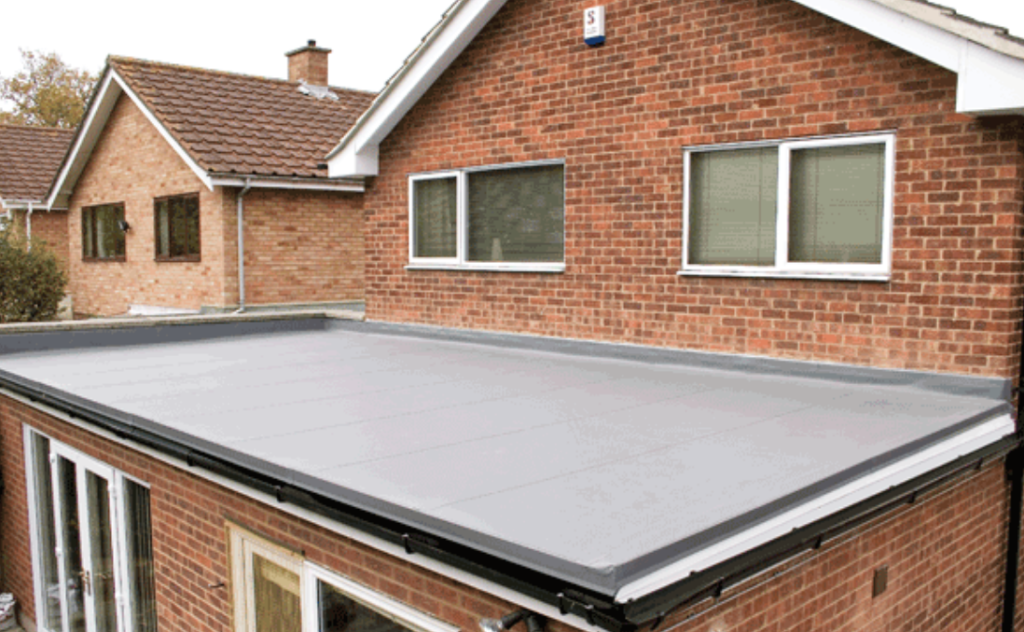
Flat roofs offer a sleek and modern design that can complement any modern home. While traditionally found on commercial buildings and modern homes, flat roofs are becoming increasingly popular on residential properties due to their numerous advantages.
One significant advantage is the extended living space they offer. With a flat roof, you can create an outdoor living space or rooftop garden, maximizing the use of your available outdoor area. The flat surface also provides a perfect platform for installation of solar panels, improving your home’s energy efficiency.
Flat roofs also require less building material than peaked roofs, making them a more cost-effective option. They are also low-maintenance, with fewer problems such as leaks and damages caused by extreme weather conditions. However, it is essential to ensure proper drainage to avoid water accumulation and potential damage.
In terms of design, flat roofs provide various options. They can be combined with other materials such as metal or wood to achieve a traditional or contemporary look. They also provide a perfect base for rooftop accessories such as decking, hot tubs, and outdoor seating areas.
When it comes to choosing roofing materials for a flat roof, several options are available. The most obvious being a flat roof membrane, which is a thin but durable layer that is installed as a waterproof barrier. Flat roof membranes come in different materials, including PVC, TPO, and EPDM. Other options include asphalt shingles, metal panels, and even green roofs.
In conclusion, a flat roof could be an excellent solution for homeowners who desire sleek, modern designs that maximize the use of available space. From cost-effective to energy-efficient, flat roofs provide several benefits that can enhance the functionality, curb appeal, and overall value of your home.
Hip Roofs
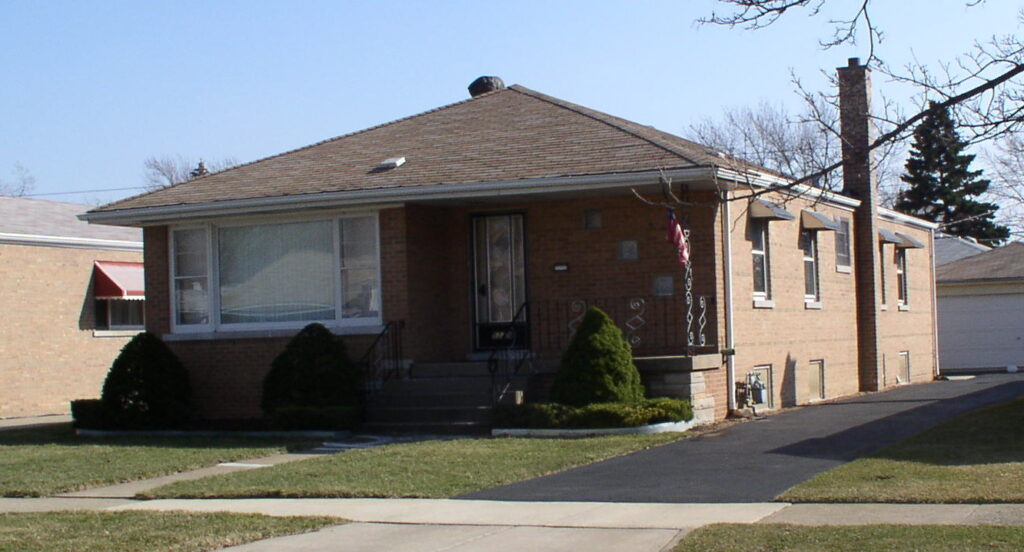
Hip roofs are a popular roofing style that is characterized by their four sloping sides and a ridge at the top. This style of roof is commonly seen on residential and commercial buildings, as well as on outdoor structures such as pavilions and gazebos. Hip roofs are an excellent choice for those looking for a durable and stylish roofing option.
One of the main benefits of hip roofs is their stability and resistance to strong winds. Because of the way they slope downward from all sides, they distribute the weight of the roof evenly and can withstand high winds and storms. This makes them an ideal choice for areas that experience extreme weather conditions.
Hip roofs also provide additional living space by allowing for the creation of an attic or additional storage space. They are easy to maintain and can last for many years with proper upkeep. Additionally, hip roofs are a popular choice for those looking to enhance the aesthetic value of their home or outdoor structure. They provide a classic and timeless look that can be customized to fit any design preference.
When it comes to the cost of hip roofs, the price can vary depending on the type of material used and the size of the structure. However, they are generally a more affordable option compared to other roofing styles such as gable roofs or flat roofs. The overall cost can be affected by factors such as labor costs, roofing services, and building codes.
In terms of roofing materials, there are several options available for hip roofs. Asphalt shingles are a popular choice due to their affordability and durability. Metal panels are also a great option as they offer high levels of resistance to weather and are available in a wide range of colors and styles. Other roofing materials, such as clay tiles and slate, can also be used for hip roofs to achieve a more traditional and elegant look.
In conclusion, hip roofs are an excellent option for those looking for a durable, stylish and cost-effective roofing solution. With a wide range of roofing materials to choose from, hip roofs can be customized to fit any design preference and provide reliable protection against harsh weather conditions.
Solid Roofs
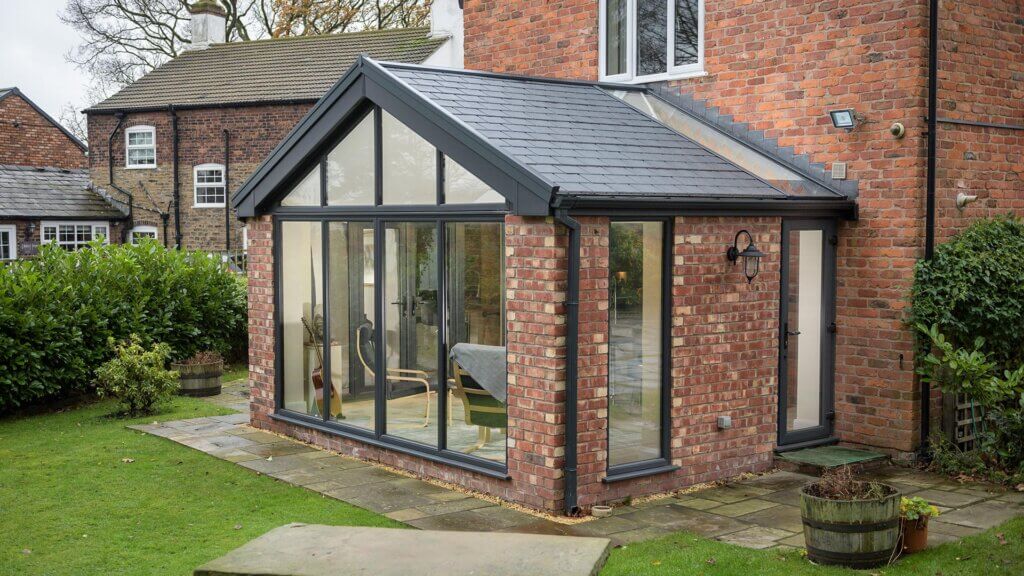
Solid roofs are an excellent choice for those looking to create an outdoor living space that can be enjoyed year-round, regardless of the weather. These types of roofs are typically made of durable, weather-resistant materials such as aluminum or PVC and are designed to provide full coverage over a patio or outdoor entertainment space.
One of the benefits of solid roofs is that they can be customized to fit any design preference. Whether you prefer a modern, sleek look or something more traditional, there is a solid roof out there that will meet your specific needs. Additionally, solid roofs can be built to match the existing architecture of your home or outdoor structure, creating a seamless transition between indoor and outdoor living spaces.
Solid roofs also provide an excellent option for roof decking. With a solid roof in place, you can create a comfortable, shaded area that is perfect for outdoor gatherings and entertainment. You can even install lighting or fans to enhance the atmosphere and provide added comfort.
Another benefit of solid roofs is that they are a permanent structure. Unlike retractable awnings or other temporary coverings, solid roofs provide a long-term solution that requires minimal maintenance. They are built to last and can withstand even the harshest weather conditions.
When it comes to the cost of solid roofs, there are a variety of factors that can impact the overall price. The type of material used, the size and complexity of the structure, and any additional features such as lighting or fans can all affect the final cost. However, solid roofs are generally considered to be a more affordable option compared to other outdoor structures such as freestanding pergolas or covered porches.
In terms of maintenance, solid roofs require very little upkeep. Most can be easily cleaned with a hose or pressure washer and some soap. Additionally, the use of high-quality materials means that these roofs are resistant to fading, cracking, and other forms of wear and tear.
Overall, solid roofs are an excellent choice for anyone looking to create an outdoor entertainment space that is both stylish and functional. Whether you are looking to add value to your home or simply create a peaceful oasis in your backyard, a solid roof is an investment that will provide years of enjoyment and comfort.
Materials Used in Patio Roofs
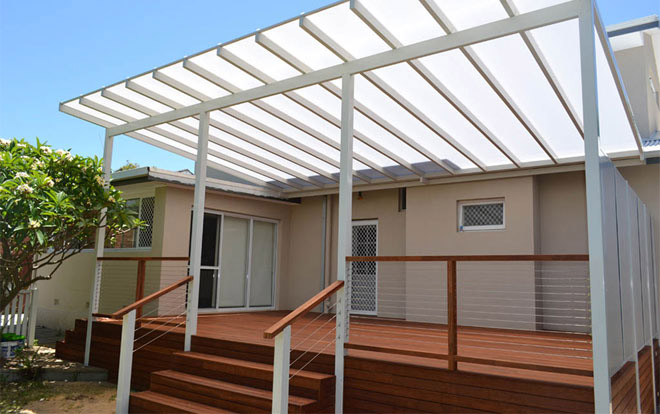
When it comes to building roofs for patio covers, there are a variety of materials available to choose from. The type of material used can impact the durability, cost, and aesthetic appeal of the final product. Here are a few of the most common materials used in patio roofs:
1. Wood: Wood is a popular choice for patio roofs due to its natural beauty and versatility. Some common types of wood used include cedar, redwood, and pressure-treated pine. While wood can be affordable, it does require regular maintenance to ensure it doesn’t rot or become damaged from exposure to the elements.
2. Metal: Metal roofs are a durable and long-lasting option for patio covers. Materials such as aluminum, steel, and copper can provide a sleek, contemporary look while also protecting against rain and sun. Metal roofs can be more expensive than other options, but their longevity and low maintenance needs make them a solid investment for homeowners.
3. Polycarbonate: Polycarbonate is a type of plastic material that is often used for patio roofs. It’s lightweight, flexible, and can be found in a range of colors and styles. Polycarbonate tends to be less expensive than wood or metal, and it also offers excellent UV protection.
4. Fiberglass: Fiberglass is a strong, durable material that is commonly used in patio covers. It’s resistant to water, rot, and insects, making it a popular choice for areas with high humidity or heavy rainfall. Fiberglass can be more expensive than other options, but its durability and low maintenance needs make it a worthwhile investment.
5. Fabric: Fabric-covered patio roofs are a popular choice for those who want a soft, natural look to their outdoor space. Materials such as canvas, mesh, and shade cloth can provide excellent sun protection while still allowing light to filter through. Fabric roofs are generally less expensive than other options, but they may require more maintenance over time due to fading and wear from exposure to the elements.
Ultimately, the type of material used in a patio roof will depend on the homeowner’s budget, maintenance needs, and desired aesthetic. By taking the time to research the various materials available and consulting with a professional roofing contractor, homeowners can ensure they make a wise investment in their outdoor living space.
Wood

Wood is a fantastic option for patio roofs, offering homeowners a natural and timeless aesthetic for their outdoor space. Cedar, redwood, and pressure-treated pine are some of the most common types of wood used for patio covers. One of the benefits of using wood is its versatility – it can be stained or painted to match the style of your home or left in its natural state for a rustic look.
Wood is also a relatively affordable option, making it accessible to homeowners on a budget. However, it’s important to note that wood does require some maintenance to ensure it remains in good condition. Regular cleaning and sealing are necessary to prevent rot and damage from moisture and sunlight.
While wood requires maintenance, it’s undoubtedly worth the effort. It offers a warm and inviting feel to any outdoor entertainment space and provides ample shade and protection from the elements. Wood patio covers are easily customizable, allowing homeowners to tailor their design to fit their personal style and preferences.
Overall, wood is an excellent choice for a patio roof. It’s affordable, versatile, and adds natural beauty to any outdoor living space. With regular maintenance, a wood patio cover can last for many years and provide a cost-effective option for homeowners looking to enhance their home’s outdoor appeal.
Metal
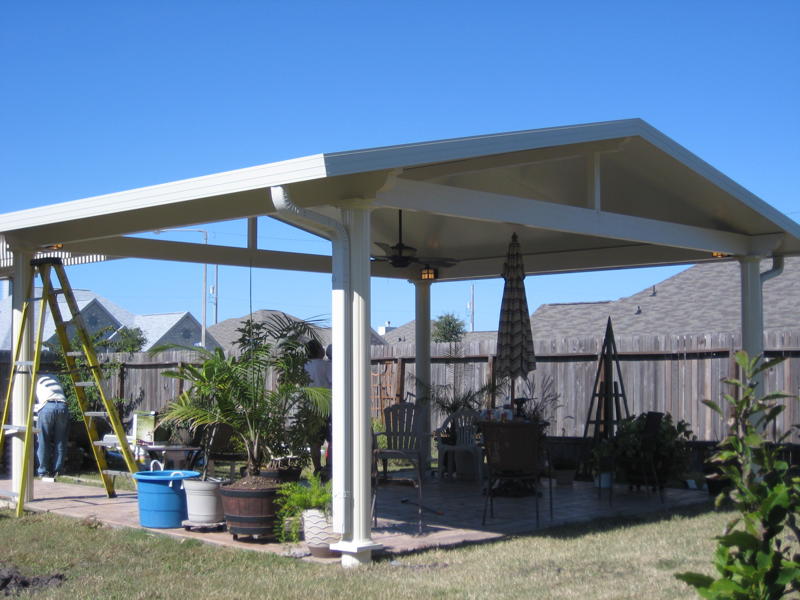
Metal is another popular material used for patio roofs. It offers a modern and sleek design that can complement a variety of architectural styles. Metal roofs are durable and long-lasting, making them a great investment for homeowners who want a permanent outdoor structure.
One of the biggest advantages of metal patio covers is their weather resistance. They can withstand harsh elements like rain, wind, and snow without experiencing any damage. This makes them an ideal option for homeowners who live in areas with extreme weather conditions. So Metal patio furniture is the best for all weathers.
In addition to their durability, metal patio covers are also low maintenance. They don’t require any painting or sealing, making them a convenient choice for homeowners who don’t have a lot of time or energy to devote to maintenance tasks.
When it comes to design options, metal is a versatile material that can be cut into a variety of shapes and sizes. This allows homeowners to customize their patio covers to fit their specific outdoor living space. Metal roofs can also be painted in a variety of colors to match the home’s exterior or add a pop of color to the outdoor entertainment area.
One thing to keep in mind when considering a metal patio cover is the potential for noise. When it rains, the sound of the rain hitting a metal roof can be quite loud. However, this can be mitigated by adding a layer of insulation under the metal roof.
In terms of cost, metal patio covers can be on the more expensive side. However, their long-term durability and low maintenance make them a worthwhile investment for homeowners who want a permanent outdoor structure that will last for years to come. Additionally, there are a variety of metal options available at different price points, so homeowners can choose a material that fits within their budget.
Overall, metal is an excellent option for homeowners who want a modern and durable patio cover for their outdoor entertainment space. Its weather resistance and low maintenance make it a convenient choice, while its customizable design options allow homeowners to create a structure that fits their personal style and preferences.
Plastic/Fiberglass
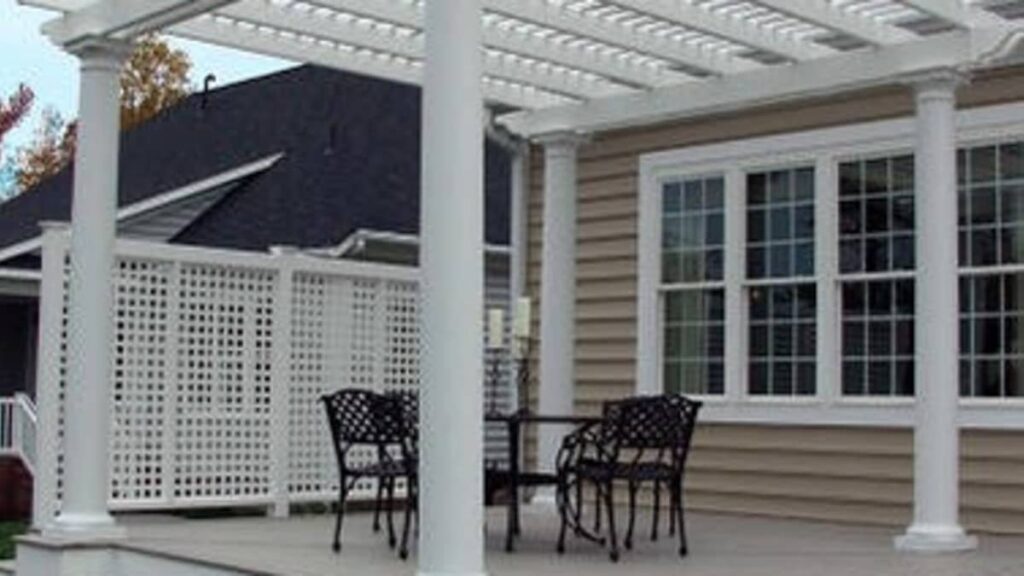
When it comes to patio covers, many homeowners opt for plastic or fiberglass materials. These types of covers offer a wide range of benefits, including durability, easy maintenance, and affordability.
One of the biggest advantages of plastic and fiberglass patio covers is their resistance to harsh weather conditions. They are extremely durable and can withstand extreme temperatures, heavy winds, and even hail. In addition, they don’t rot or decay over time like wood covers, making them a low-maintenance option for homeowners.
Another benefit of plastic and fiberglass patio covers is their affordability. They are generally more cost-effective than other materials like metal or wood, making them an excellent choice for budget-conscious homeowners. They also come in a variety of styles and colors, giving homeowners the ability to customize their cover to match their home’s exterior.
When it comes to installation, plastic and fiberglass patio covers are relatively easy to install. They are lightweight, which makes them easy to maneuver and install. They also require minimal tools and expertise, making them a great option for DIY projects.
One potential downside of plastic and fiberglass covers is their lack of insulation. This can lead to a noisy cover during rain storms, as the sound of the rain hitting the cover can be quite loud. However, homeowners can mitigate this issue by adding insulation underneath the cover.
In terms of maintenance, plastic and fiberglass patio covers require minimal upkeep. They don’t require painting or staining, and can easily be cleaned with soap and water. This makes them a convenient option for homeowners who don’t have a lot of time to devote to maintenance tasks.
Overall, plastic and fiberglass patio covers are an excellent choice for homeowners who want a durable, affordable, and low-maintenance outdoor living space. With a wide range of styles and colors available, they offer the perfect solution for homeowners looking to enhance their outdoor entertainment space.
Average Costs of Installing a Patio Cover
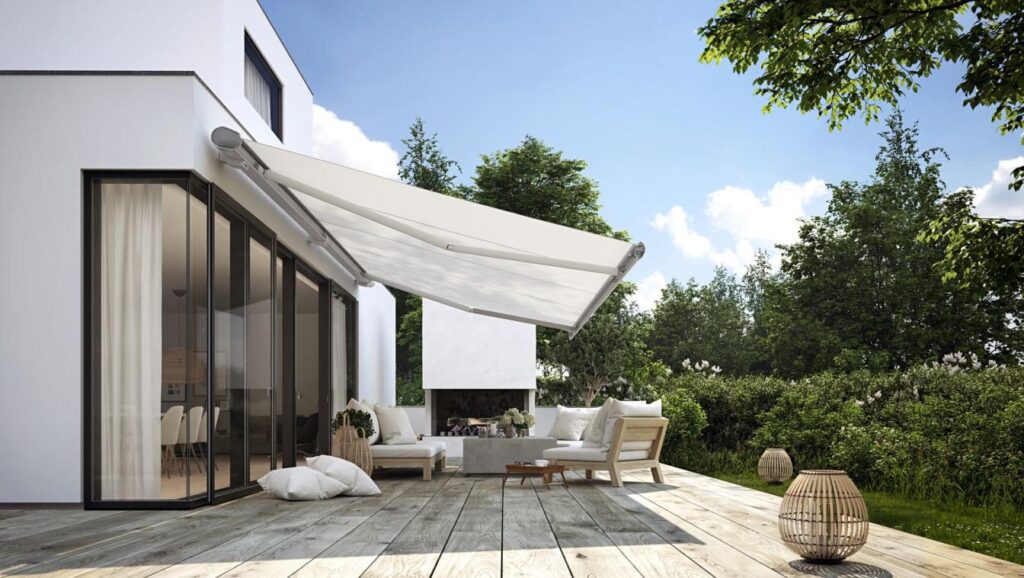
Adding a patio cover to an outdoor living space is an excellent way to create a shaded oasis and extend the use of the area. This type of outdoor structure can also protect outdoor furniture, cooking equipment, and even provide an entertainment space. But before diving into the project, it’s important to understand the average costs of installing a patio cover.
The overall cost of installing a patio cover can vary depending on a number of factors, such as the type of material used, the size of the structure, the location, and the complexity of the design. On average, homeowners can expect to spend between $700 and $10,000 for a patio cover.
The type of patio cover material plays a significant role in determining the overall cost. A pergola, for example, is a popular freestanding structure with an open design and a simple frame. Pergolas made of wood or vinyl can cost anywhere between $500 and $8,000. If a homeowner decides to go for a more permanent solid roof, prices can range from $3000 to $10,000.
The size of the patio cover also influences the final cost. Larger covers typically require more materials and labor, which can increase the overall cost of the project. For example, a basic 10’ x 10’ pergola can cost about $500, whereas a larger 20’ x 20’ pergola can cost upwards of $8,000.
The location of the installation can also impact the cost. Building codes and permits may be necessary, and some regions require inspections and fees to be paid. Additionally, certain areas may require specialized materials to withstand harsh weather elements, such as snow or high winds, driving up the cost even more.
The complexity of the design is also a factor in the cost of a patio cover. Simple designs using more affordable materials will cost less compared to elaborate designs using more expensive materials and requiring more detailed labor.
Finally, labor costs can vary greatly based on the contractor hired and the region. It’s important to research and compare the pricing and services provided by different contractors before committing to a project.
In conclusion, the average cost of installing a patio cover varies widely depending on multiple factors. Understanding these factors and communicating them clearly with the contractor can ensure an accurate and reasonable estimate. Investing in a patio cover can add both beauty and functionality to outdoor spaces, providing homeowners with a comfortable and protected area to enjoy their time outside.
Popular Options for Patio Covers
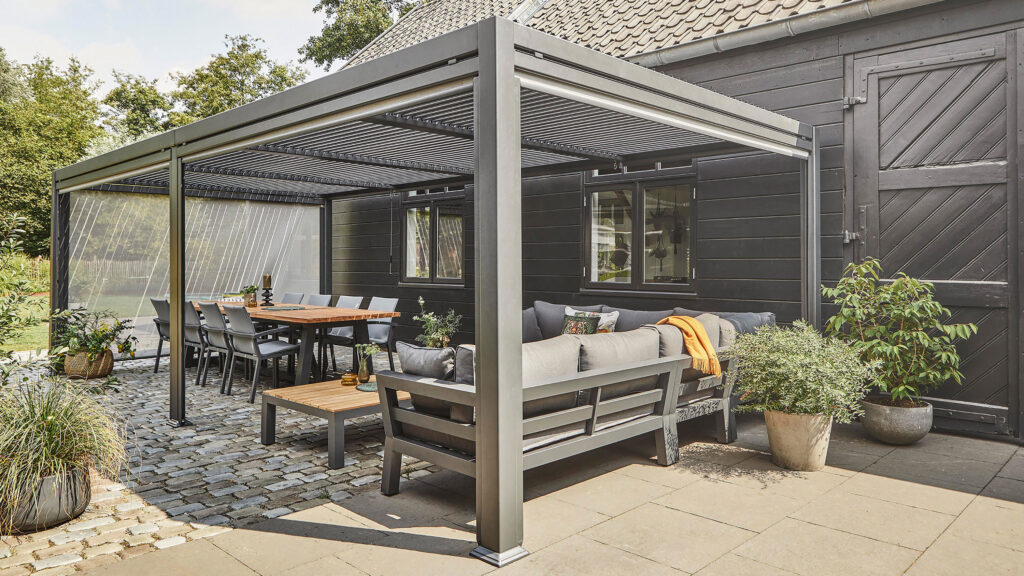
When it comes to creating an outdoor living space that provides both shade and protection, patio covers are a popular choice for homeowners. A patio cover adds an attractive element to the exterior of a home and extends the usable space of your yard. Not only do they provide relief from the sun and rain, but they can also increase the value of a home. Here are some popular options for patio covers:
1. Pergolas – One of the most versatile and attractive options, pergolas are freestanding structures that feature an open lattice roof and a sturdy frame. They can be made of wood or vinyl and can be customized to fit the style of your home and yard. Pergolas provide partial shade and can be used to support climbing vines and hanging plants.
2. Solid Roofs – For a more permanent and robust patio cover option, a solid roof may be a better choice. These roofs can be made of various materials like shingles, tiles, or metal and are designed to withstand inclement weather conditions. They provide full shade and can also come with added features like ceiling fans, lighting, and heaters.
3. Retractable Awnings – For homeowners looking for a flexible shade solution, retractable awnings are an excellent choice. These awnings are typically attached to the exterior of the home and can be deployed or retracted manually or electronically. They come in a variety of colors, patterns, and materials and can be customized to fit any size patio or outdoor space.
4. Patio Umbrellas – A classic and budget-friendly option, patio umbrellas are easy to set up, move and store. They come in a range of sizes, colors, and shapes, and can be used alone or in multiples to cover a larger space. Some umbrellas are equipped with adjustable tilt features that allow for better shade coverage.
5. Shade Sails – A modern and contemporary option, shade sails are typically made of a weather-resistant fabric and are designed to be hung from one or more supporting points. They provide partial shade and can be arranged in different configurations for a unique and artistic look.
Whichever option you choose, it’s essential to keep in mind the size of your space, budget, and aesthetic. Consider consulting with a professional contractor or designer to help you find the perfect patio cover solution for your needs. With a little research and planning, you can create a comfortable and stylish outdoor living space that you can enjoy year-round.
Perfect Solution for Your Home
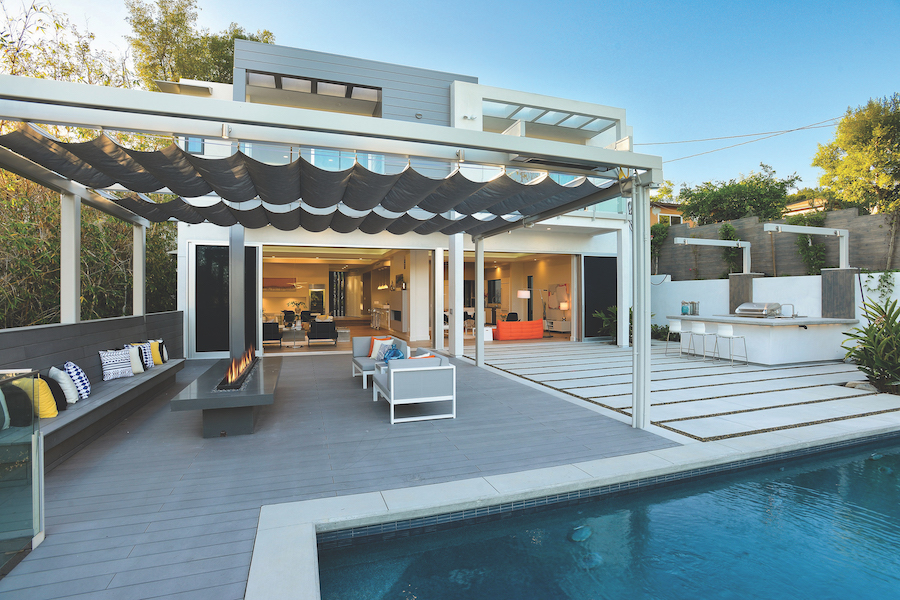
Are you looking for the perfect solution to add some extra outdoor living space to your home? A patio cover may be just what you need!
Patio covers come in a wide range of styles, materials, and designs, making them a versatile and customizable addition to your outdoor space. Not only do they provide shade, but they also add value to your home and can be a great entertainment space for family and friends.
When choosing a patio cover for your home, there are several factors to consider. The type of roof is one of the most important considerations, with options ranging from gable roofs to flat roofs and hip roofs. The material used for the roofing and frame is also crucial, as different materials offer varying levels of durability and style options.
Another popular option to consider is a retractable awning, which offers a flexible shade solution that can be easily adjusted as the sun moves throughout the day. Shade sails and patio umbrellas are also budget-friendly options that can add a pop of color and style to your outdoor space.
Adding a patio cover can also significantly increase the functionality of your outdoor space, allowing for year-round enjoyment regardless of the weather. With the addition of some outdoor furniture, fairy lights, and other decor, your patio cover can become a beautiful and practical extension of your home.
Before choosing a patio cover, be sure to check building codes in your area and consult with professionals for the best options for your specific needs. With the right patio cover in place, you’ll have the perfect solution for a beautiful and functional outdoor living space right at your fingertips!




